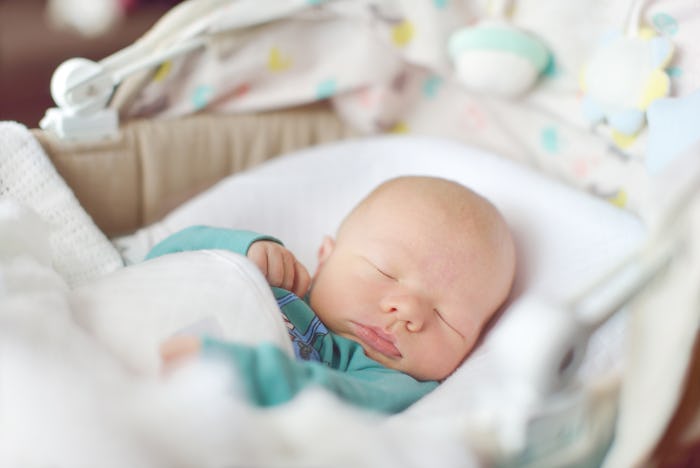Life

ow Common SIDS Is In Cribs Vs. Bassinets
Becoming a parent introduces a whole new level of anxiety into your life. Of all the things you're sure to worry about, Sudden Infant Death Syndrome (SIDS) is probably high on that list for at least the first year of your baby's life. How and where your baby sleeps is a big part of lowering the risk of SIDS, so it's worth asking yourself, "Is SIDS more common in cribs than bassinets?" After all, it doesn't hurt to know the risks before you decide on a sleeping arrangement for your new bundle of joy.
The National Institute of Child Health and Human Development (NICHD) launched the "Back to Sleep" campaign in 1994. It encouraged and advised parents to place their babies on their back to sleep, and led to a significant decline in the rates of national SIDS cases. According to the NICHD, however, an estimated 3,500 babies still die every year in the United States from SIDS, so it's important for all parents to continue to follow best sleeping practices, despite the overall decline in SIDS cases.
The American Academy of Pediatrics (AAP) outlines safe sleep practices that parents should be following to decrease the risks of SIDS-related deaths. Those guidelines include placing your baby on their back to sleep, keeping the sleep space bare from pillows, comforters, blankets, and toys, and not letting your baby sleep on an armchair or sofa.
The AAP also reminds parents to, according to their site, "Keep baby's sleep area in the same room where you sleep for the fist six months or, ideally, the first year. Place your baby's crib, or bassinet, portable crib, or play yard in your bedroom, close to your bed." In other words, and despite the sometimes contentious debate that swirls around specific sleeping arrangements for children, the AAP recommends parents co-sleep with their baby for the first year of their life, as long as they don't share the same sleeping space (i.e. bed-sharing).
This advice shows that when it comes to keeping baby safe, a crib or a bassinet are comparable sleep spaces. It doesn't matter if your baby sleeps in a bassinet or a crib, so long as it's close to where the parent sleeps, is free from loose blankets, pillows, and toys, and your baby hasn't outgrown either the bassinet or the crib. According to The Baby Sleep Site, "the average age for making the switch from crib to bed is between 3 and 4 years," when SIDS is no longer a risk.
The Children's Hospital of Philadelphia echoes the AAP's advice, and agrees there is no difference in safety between a crib and a bassinet, saying:
"The risk for SIDS is reduced when a baby sleeps in the same room as the mother. However, the baby should be in his or her own crib, bassinet, or Moses basket."
Pediatrician Rachel Moon, who works at Children's National Medical Center in Washington, D.C., told NPR in an interview in 2011 that, "All the babies who died suddenly and unexpectedly [each year] have all died in unsafe sleep environments. These are all cases that could have been prevented."
The experts are clear when it comes to your baby's sleep: follow safe sleeping practices for your baby, whether they sleep in a crib or a bassinet, and you will significantly reduce the risk of SIDS. Then you can sleep soundly, too, and at least scratch one fear off your list.